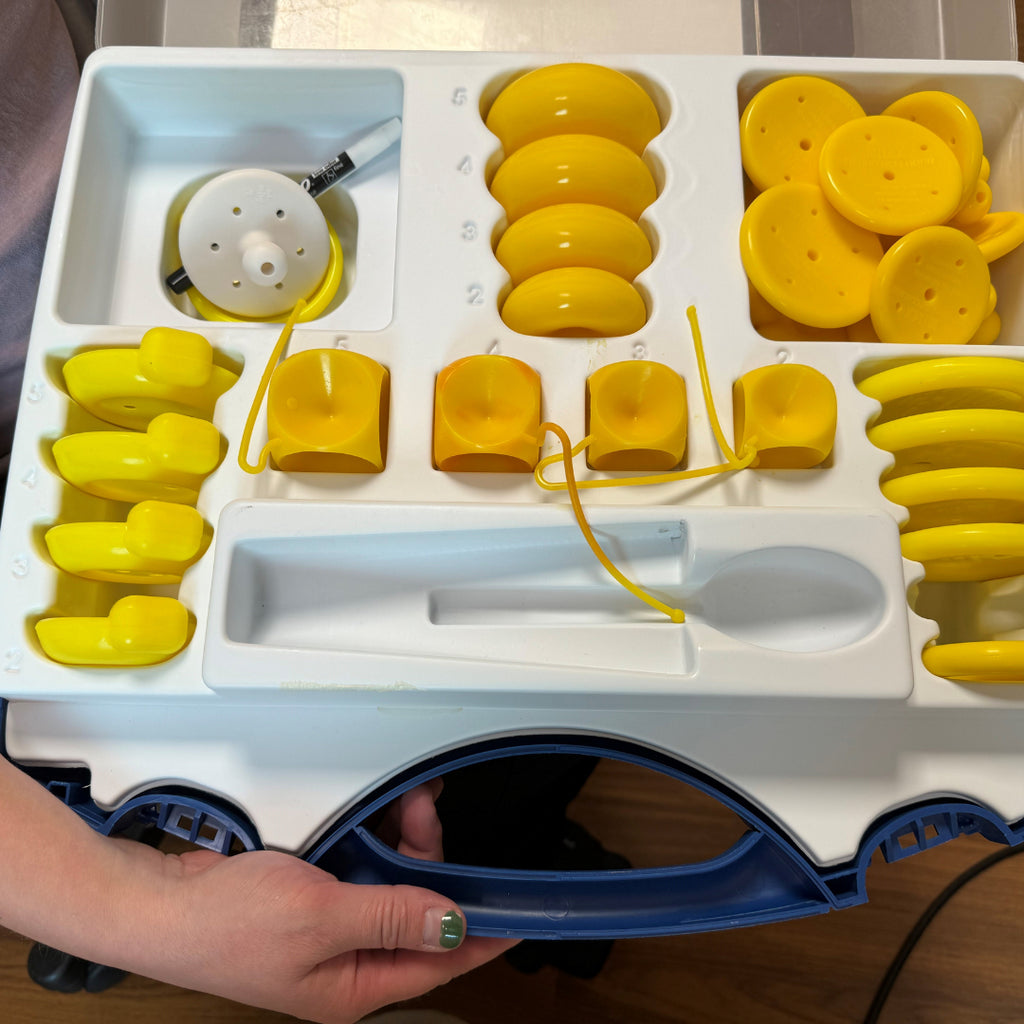What It's Like Using a Pessary
Posted by HOLLY MOSACK

Why I tried.
While I love wearing Moxie Leakproof Activewear, I’d also love to just not leak! In earlier blog posts, I talked about my experiences both with pelvic floor therapy and also the Emsella treatment. You’ve probably guessed that if I’m writing another blog, neither of those techniques were quite right for me. Several years ago, I remember my OB/GYN talking to me about different options and one she mentioned was using a pessary, which she quickly followed up with “that’s not really ideal for someone your age.” (I was around 45 at the time.)
Well, nothing that I’ve tried has worked for me, so I thought, “what the heck, let’s give it a shot!” I met with a nurse at a urology practice about the process and figured others might want to know what it was like.
The Process
During my first appointment, they took my standard vitals and had me do a urinalysis. Afterwards, they did a sonogram of my bladder to see if I was retaining urine. Surprisingly, I had emptied my bladder. I say “surprisingly” because it doesn’t always seem like I’ve emptied my bladder completely.
After the basics were taken care of, the nurse talked to me about pessaries – what they are, how they work, etc. (I’ll explain all of that later!) I told her I was still interested, so she gave me a prescription for estriol cream to use in my vagina for the next 14 days before my next appointment where she would fit me for my pessary. She explained if the prescription was too expensive, I could also use coconut oil. Honestly, I should’ve asked why I needed to use the cream, but I was hung up on coconut oil being a substitute!
I went to Walgreens and sure enough, this tube of cream was over $100! So I took it to the VA Clinic and got it for free (took a few days). I used the cream and the first few days, I think I was paranoid because I didn’t understand what the cream was for, so I felt like I was getting a minor yeast infection. Turns out, nothing happened, so I think it was all in my head. Is this TMI?!?
Anyway, I completed the 14 days and then, guess what? Appointment was postponed. Went through the regiment again, and again appointment was postponed. Finally on the third tempt and I don’t know how many nights of using this cream, I was in!
During this second appointment, once again, I had my vitals checked, another sonogram taken. This time when the nurse came in, she came in with a case of pessaries and I was a bit horrified. They reminded me of those Legos Duplo blocks… not really, but that was the closest thing they resembled and I just wondered “how is that going to feel inside me?!?”
One of my main concerns was being able to get it out. She had told me in my first appointment that some women wear them all the time and just come into the office to have them removed and cleaned. Other women take them out on their own. Yes, you can wear them during intercourse. But for me, I just wanted to be able to put it in before I exercised and then take it out afterwards. So, she left with the case of Duplos and came back with something a little less daunting. It looks essentially like a large silicone ring with a square notch on the end.
Alright, let’s do it. The nurse inserted it (just squeeze the ring together with the notch on the bottom and once it’s in place, it opens up). I put my underwear and shorts on and jumped around quite a bit, squatted some, jogged in place – trying to see if I could feel it or if it would fall out. All good! Now it was time for me to take it out, honestly, something I wasn’t looking forward to and was a bit nervous about. But it was actually pretty easy. I wish I could relate it to something else, but I can’t really, just trust me, I didn’t have to dig around to find it!!!
The Results
Excited to maybe have a solution, I went home and tried it the very next day! And…. it fell out (more like a part of it was coming out). But this happened at probably .25 of a 1 mile run with my dog and what was I supposed to do, so I just kept running. And then, when I got home, I was immediately distracted by something else I had to do, so I had that thing in halfway for probably 45 minutes. Yeah, that was a dumb move because for the next few days I was sore, so I didn’t even bother with it.
Second attempt… Another fail, but this time I removed it as soon as my run was over. The next several days, I had the same result. Defeated, I went back to the nurse and told her my news. So she gave me another one, just a different size. And that’s where I’m at now in the process. Hopefully this new one will have better results and I can be a proponent of the pessary! Stay tuned!
What is a Pessary?
A pessary is a small, removable device that's inserted into the vagina to support the pelvic organs. It's typically made from silicone or plastic and comes in various shapes and sizes. Think of it like a supportive cushion for your pelvic floor, helping to manage conditions like pelvic organ prolapse or urinary incontinence.
Benefits of Using a Pessary
- Non-Surgical Solution: One of the biggest benefits of a pessary is that it offers a non-surgical option for managing pelvic issues. Surgery is not always necessary or ideal for every woman, and a pessary can often provide relief without the need for invasive procedures.
- Customizable and Reversible: Pessaries come in different shapes and sizes, which means they can be tailored to meet individual needs. Your healthcare provider will help you find the right fit and make adjustments as needed. Plus, since pessaries are removable, you have the flexibility to take it out or put it in as needed.
- Immediate Relief: Many women experience immediate relief from symptoms after using a pessary. For those with pelvic organ prolapse, it can reduce discomfort and pressure almost right away. For urinary incontinence, it can help manage leakage and allow for a more active lifestyle.
- Low Maintenance: Taking care of a pessary is relatively simple. With proper cleaning and regular check-ups, a pessary can be a low-maintenance solution to pelvic issues. Most women find it easy to incorporate into their daily routine.


